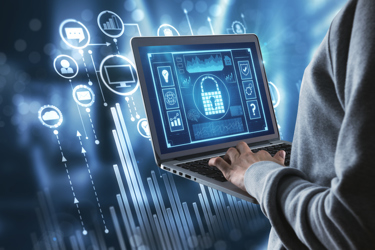4 Ways To Improve Email Security Amidst Growing Cyber Threats
By Jason Green, Trustifi

Millions of people are trying to adjust to our new reality — one where we work from home quite literally all the time.
For the safety of ourselves and others, there’s nowhere else we can go. Unfortunately, for hackers and other bad actors, they can now go more places than ever.
In a survey late last month, nearly 85 percent of senior technology executives said at least half of their workforces were working from home. Twenty-five percent of their organizations were entirely remote.
This has created a veritable minefield for email security as employees retreat to unsecure networks and unprotected communications solutions, a minefield that has only grown more treacherous in the last few weeks.
Organizations are as large as the World Health Organization (WHO) and the U.S. Federal Trade Commission have even issued recent warnings about scammers spreading coronavirus-related phishing attacks via email in their names.
So what can you do right now? Here are a few essentials to keep in mind:
- Avoid
This is, of course, a standard for self-protection, but it’s still important: Keep a close eye out for any emails and attachments received from unknown or suspicious sources. It sounds obvious, but far too many continue to fall victim to basic phishing methods, and you must be extra vigilant in times like these as sophistication increases.
- Validate
Whenever possible, always take the extra step of validating the sender identity — of any emails you might interact with. Be especially wary of anyone asking for you to disclose information or grant specific permissions, as these may open doors to spoofing and phishing attacks.
- Focus
Try to use email systems that quickly identify and dispense of spam from your inbox entirely. It can be not only detrimental to productivity but offer an easy way for hostile actors to learn your information and use it for their malicious goals.
- Encrypt
If you’re sending any sensitive information, be sure to use an encrypted channel — especially for messages vulnerable to man-in-the-middle attacks that may expose both you and your recipient’s information. Encryption also can serve you well in setting up secure virtual meetings, so let it serve as an indispensable tool in your toolbelt.
This is a good place to start, but these measures only serve as an opening salvo in your security fight. Attackers will continue to try to capitalize on fear and panic, whatever comes next.
Use a password manager. Don’t work on free Wi-Fi. Set up two-factor authentication in as many places as you can. Utilize your antivirus and anti-malware software. Keep your computer up to date.
At Trustifi, we’re offering free, 90-day trials of our email encryption solutions during this time to help companies face a new reality. We’ve also launched our COVID-19 Incident Response Team, dedicated to serving businesses directly affected by ongoing threats.
In the meantime, make sure to stay inside when you can and stay safe — physically and electronically.
About The Author
Jason Green is CRO at Trustifi, a cybersecurity firm featuring solutions delivered on a software-as-a-service-platform. Trustifi leads the market with the easiest-to-use-and-deploy email security products, providing both inbound and outbound email security from a single vendor. The company’s Inbound Shield, Data Loss Prevention, and Email Encryption solutions adhere to GDPR, HIPAA, PII, and CCPA regulations.
